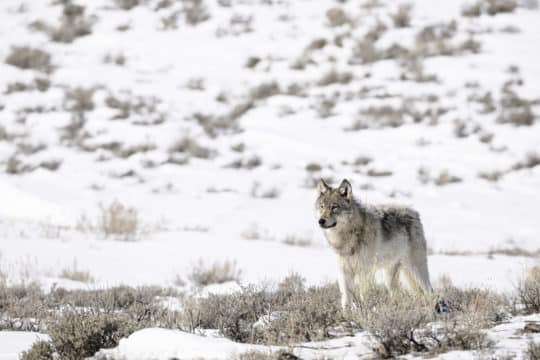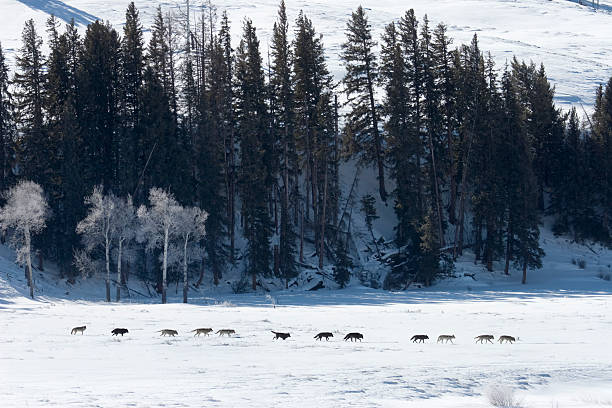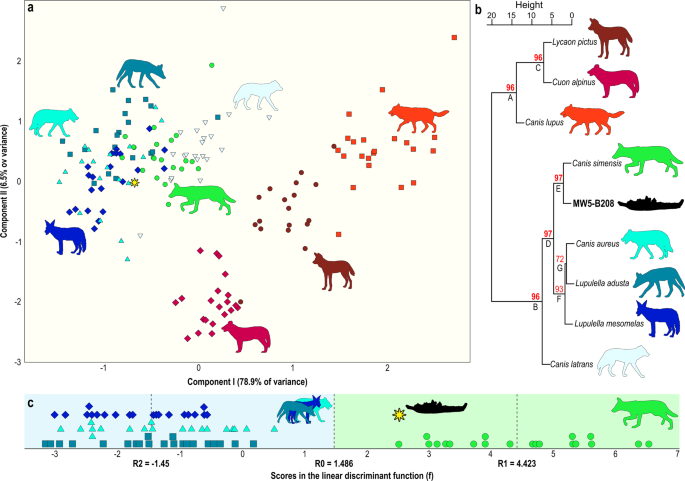Wildlife Tourism: How Wolf Conservation Generates Half-Billion Dollar Economic Impact
The Economic Power of Wolf Tourism
When we think about conservation efforts, we often focus on the environmental benefits. But what if I told you that protecting wolves isn't just good for ecosystems—it's also an economic powerhouse? I've been studying this fascinating intersection of wildlife protection and tourism economics, and the numbers are truly remarkable. Wolf conservation is generating over $500 million in economic impact through tourism, creating a compelling case for protecting these magnificent predators that goes beyond ecological arguments.
The Economic Power of Wolf Tourism
When I first began researching the economic impact of wolf tourism, I was astounded by the numbers. Wildlife tourism centered specifically around wolf watching and wolf-related activities generates over $500 million annually across North America. This isn't just pocket change—it's a significant economic engine for many rural communities.

Wolf tourism attracts dedicated wildlife enthusiasts who invest significantly in equipment, guides, and extended stays.
What makes this economic impact so powerful is that wildlife enthusiasts seeking wolf encounters are often willing to spend more and stay longer than average tourists. They invest in specialized equipment, professional guides, and multiple nights of accommodation in their quest to glimpse these elusive predators in their natural habitat.
Direct vs. Indirect Economic Benefits
The economic impact of wolf tourism extends through multiple sectors of local economies:
I've found that the direct benefits—like spending on guides and lodging—are just the beginning. The indirect benefits include increased tax revenue, job creation, and overall economic revitalization in communities that might otherwise struggle after the decline of traditional industries like logging or mining.
Wolf Tourism Compared to Other Wildlife Segments
How does wolf tourism stack up against other popular wildlife tourism segments?
While whale watching and bear viewing may generate slightly higher revenues overall, wolf tourism is remarkable for its concentrated economic impact in specific regions. It's also worth noting that in places like Yellowstone National Park, wolves have become the primary wildlife attraction for many visitors, surpassing even the iconic bears and bison that were once the main draw. This shift demonstrates the powerful America's economic journey toward valuing conservation as a viable economic strategy.
Yellowstone: The Wolf Tourism Success Story
The reintroduction of wolves to Yellowstone National Park in 1995 stands as one of the most successful wildlife conservation stories in history—not just ecologically, but economically. What began as a controversial ecological experiment has transformed into a tourism phenomenon that I've been fortunate enough to witness firsthand.

Yellowstone's Lamar Valley, often called "America's Serengeti," has become the premier wolf watching destination in North America.
The statistics tell a compelling story: According to visitor surveys, approximately 150,000 visitors per year now cite wolf watching as their primary reason for visiting Yellowstone. With the average wildlife tourist spending around $3,000 per trip between travel, accommodations, food, equipment, and guide services, the economic impact is substantial.
The correlation between wolf population and tourism revenue in Yellowstone shows a fascinating pattern:
What's particularly interesting is how the tourism revenue has continued to grow even as wolf populations have fluctuated. This suggests that the economic value of wolves isn't simply tied to their numbers, but to their cultural and symbolic significance, as well as the infrastructure that has developed around wolf tourism.
Tools like PageOn.ai's Deep Search functionality could revolutionize how we understand these relationships by integrating real-time wolf population data with tourism metrics. Imagine being able to visualize not just historical correlations, but predictive models that help communities and conservation organizations plan for sustainable tourism growth.
Wolf Data Integration Model
How PageOn.ai could integrate wolf population data with tourism metrics:
flowchart TD
A[Wolf Population Data] -->|Real-time tracking| B[PageOn.ai Deep Search]
C[Tourism Revenue Data] -->|Economic metrics| B
D[Visitor Survey Data] -->|Experience feedback| B
B -->|Data integration| E[Visualization Engine]
E -->|Interactive dashboards| F[Tourism Forecasting]
E -->|Dynamic reports| G[Conservation Planning]
E -->|Visual storytelling| H[Public Education]
Beyond Direct Revenue: The Economic Ripple Effect
The economic impact of wolf tourism extends far beyond the immediate dollars spent by visitors. I've seen firsthand how communities near wolf habitats experience profound transformations that ripple through their entire economic structure.
Job Creation in Wolf Tourism
Wolf tourism creates diverse employment opportunities across multiple sectors:
What's particularly valuable about these jobs is that many are created in rural communities that have historically struggled with economic opportunities. In places like Cooke City, Montana, or Gardiner, Wyoming—gateway communities to Yellowstone—wolf tourism has revitalized economies that were previously dependent on more extractive or seasonal industries.

The transformation of gateway communities like Gardiner, Wyoming shows the economic revitalization powered by wolf tourism.
Tax revenue generation is another significant benefit. Local governments near wolf tourism hotspots have reported increases in sales tax, lodging tax, and property tax revenues. These funds directly support public services like schools, infrastructure, and emergency services.
Economic Ripple Effect Model
Using PageOn.ai's AI Blocks to illustrate the economic relationships:
flowchart TD
A[Wolf Conservation] -->|Healthy wolf population| B[Wolf Tourism]
B -->|Direct spending| C[Primary Tourism Businesses]
C -->|Local purchasing| D[Secondary Businesses]
C -->|Employment| E[Local Jobs]
C -->|Taxes| F[Local Government Revenue]
E -->|Income| G[Local Spending]
F -->|Public services| H[Community Infrastructure]
G -->|Economic activity| D
D -->|Supply chain| I[Regional Economy]
H -->|Quality of life| J[Population Retention]
J -->|Workforce| C
The circular nature of these economic relationships demonstrates why wolf conservation creates such powerful economic benefits. By using aquatic ecosystem visual vibes answer key approaches to understand complex ecological and economic relationships, we can better appreciate how protecting one species can generate cascading benefits throughout an entire regional economy.
Conservation Funding Models Through Tourism
One of the most exciting aspects of wolf tourism is how it creates sustainable funding streams for conservation efforts. I've studied various models where tourism dollars directly support the very wolves that visitors come to see—creating a virtuous cycle of conservation and economic benefit.

Some tourism programs allow visitors to participate in or observe conservation activities like wolf collaring, creating powerful educational experiences while generating funding.
Public-Private Partnership Structures
The funding relationships between tourism and conservation take several forms:
flowchart TD
A[Tourism Revenue Sources] --> B[Direct Donations]
A --> C[Conservation Fees]
A --> D[Commercial Partnerships]
A --> E[Merchandise Sales]
B --> F[Wolf Conservation Fund]
C --> F
D --> F
E --> F
F --> G[Research Programs]
F --> H[Habitat Protection]
F --> I[Conflict Mitigation]
F --> J[Education & Outreach]
G --> K[Healthy Wolf Populations]
H --> K
I --> K
J --> K
K --> A
Several wolf conservation programs have developed innovative funding models that leverage tourism interest. For example, the Wolf Conservation Center in New York offers "adoption" programs where visitors can symbolically adopt a wolf, with proceeds supporting conservation efforts. In Yellowstone, a percentage of guide service fees often goes directly to research and monitoring programs.
Conservation Funding Allocation
How tourism-derived conservation funds are typically allocated:
Using PageOn.ai's Vibe Creation tools, conservation organizations can create compelling visual narratives around funding allocation. This transparency helps donors and tourism partners understand exactly how their contributions support wolf conservation efforts.
The success of these funding models demonstrates how conservation can be financially sustainable when coupled with thoughtful tourism development. By creating visual personal brand story approaches for conservation organizations, we can help them better communicate their impact and attract more support.
Challenges to Sustainable Wolf Tourism
Despite the impressive economic benefits, wolf tourism faces significant challenges that must be addressed to ensure long-term sustainability. I've observed these challenges firsthand during my research in wolf tourism hotspots.

Managing visitor numbers and behavior is a critical challenge for sustainable wolf tourism.
Balancing Access with Protection
The fundamental tension in wolf tourism lies in providing meaningful visitor experiences while protecting the very animals people come to see. Wolves are naturally wary of humans and can be disturbed by excessive visitation, particularly during sensitive times like denning season or at rendezvous sites.
Seasonal Tourism Fluctuations
Wolf tourism experiences significant seasonal variations that create economic challenges:
These seasonal fluctuations create economic stability challenges for communities dependent on wolf tourism. Winter often provides the best wolf viewing opportunities due to increased visibility against snow and more predictable pack movements, but harsh conditions limit visitor numbers. Meanwhile, summer brings peak general tourism but lower wolf visibility.
Managing Human-Wildlife Conflict
In areas where wolf tourism overlaps with ranching or other traditional land uses, human-wildlife conflict can threaten both wolf populations and tourism opportunities. Successful wolf tourism depends on addressing these conflicts through compensation programs, improved husbandry practices, and community engagement.
Sustainable Tourism Model
Using PageOn.ai's structured content blocks to visualize sustainable tourism:
flowchart TD
subgraph "Ecological Sustainability"
A[Habitat Protection]
B[Disturbance Minimization]
C[Scientific Monitoring]
end
subgraph "Economic Sustainability"
D[Year-round Revenue Streams]
E[Local Employment]
F[Infrastructure Development]
end
subgraph "Social Sustainability"
G[Community Support]
H[Educational Programs]
I[Conflict Resolution]
end
J[Sustainable Wolf Tourism]
A --> J
B --> J
C --> J
D --> J
E --> J
F --> J
G --> J
H --> J
I --> J
Finding solutions to these challenges requires innovative approaches that balance ecological, economic, and social considerations. AI travel assistants could potentially help by providing real-time guidance to visitors about responsible wildlife viewing practices and directing them to less crowded viewing opportunities.
The Future of Wolf Tourism Economics
As I look to the future of wolf tourism, I see tremendous potential for growth and innovation. The intersection of conservation awareness, technological advancement, and changing travel preferences creates exciting opportunities for wolf tourism to expand its economic impact while better protecting the species.

Emerging technologies like augmented reality are enhancing wolf tourism experiences while reducing direct wildlife disturbance.
Emerging Eco-Conscious Tourism Trends
The rise of eco-conscious tourism represents a significant opportunity for wolf-focused destinations. Today's wildlife tourists increasingly seek authentic experiences that contribute to conservation rather than just viewing animals. This shift creates opportunities for premium experiences that generate higher revenue while limiting ecological impact.
Growth Forecast by Experience Type
Projections for different segments of wolf tourism over the next decade:
Technology's Role in Wolf Tourism
Technological innovations are transforming how visitors experience wolf tourism. Virtual and augmented reality tools allow visitors to "see" wolves and understand their behavior even when direct observation isn't possible. Remote camera systems provide live feeds of wolf activity without human disturbance. GPS tracking data visualizations help visitors understand wolf movements and territory use.
PageOn.ai's Agentic capabilities could revolutionize how this data is presented to visitors. Imagine interactive displays that transform complex wolf tracking data into accessible visual stories, helping visitors understand the ecological role of wolves while minimizing direct disturbance to the animals.
Expansion to Other Species Conservation
The wolf tourism model offers valuable lessons for conservation efforts focused on other species. The economic success of wolf tourism demonstrates that protecting predators and other charismatic species can generate significant revenue. This model could be expanded to support conservation of other endangered species, creating new economic opportunities while advancing conservation goals. By developing open courses about these successful models, we can help spread these approaches to other regions and species.
Creating Compelling Wolf Conservation Narratives
In my years studying wildlife tourism, I've found that the most successful conservation initiatives share one critical element: powerful storytelling. The economic success of wolf tourism isn't just about the wolves themselves—it's about how their stories connect with visitors on an emotional level.

Storytelling creates emotional connections that drive conservation support and tourism engagement.
The Power of Visual Storytelling
Visual media plays a crucial role in creating emotional connections to wolf conservation. Photography, film, and digital visualization help visitors understand wolf behavior, ecology, and conservation challenges. These visual stories transform abstract conservation concepts into tangible, relatable narratives.
Elements of Effective Conservation Storytelling
Key components that drive engagement with conservation narratives:
flowchart TD
A[Individual Animal Stories] -->|Personal connection| G[Emotional Engagement]
B[Scientific Discovery] -->|Intellectual curiosity| G
C[Conservation Challenges] -->|Problem awareness| G
D[Success Stories] -->|Inspiration & hope| G
E[Cultural Significance] -->|Heritage connection| G
F[Economic Benefits] -->|Practical value| G
G -->|Drives| H[Conservation Support]
G -->|Motivates| I[Tourism Participation]
G -->|Inspires| J[Community Involvement]
H --> K[Sustainable Conservation]
I --> K
J --> K
The most compelling wolf conservation narratives often focus on individual wolves or packs that visitors can follow over time. In Yellowstone, wolves like the famous 06 female (who led the Lamar Canyon pack) or the Druid Peak pack became celebrities whose stories drew visitors from around the world and generated passionate support for conservation efforts.
Business Integration of Conservation Messaging
Tourism businesses that authentically incorporate conservation messaging into their operations often see increased customer engagement and loyalty. This isn't just good for conservation—it's good for business. Visitors increasingly seek authentic experiences that align with their values, including wildlife protection.
PageOn.ai offers powerful tools for transforming abstract conservation concepts into visual stories that resonate with audiences. By visualizing complex ecological relationships, economic impacts, and conservation successes, organizations can create more compelling narratives that drive both tourism engagement and conservation support.
Narrative Impact on Visitor Behavior
How different storytelling approaches influence visitor actions:
The data clearly shows that personalized storytelling focusing on individual wolves and their lives creates the strongest emotional connections and drives the most significant visitor engagement. This understanding can help conservation organizations and tourism businesses craft more effective messaging that supports both economic and conservation goals.
Transform Your Conservation Storytelling with PageOn.ai
Create powerful visual expressions that communicate the economic and ecological value of wildlife conservation. Turn complex data into compelling visual narratives that inspire action.
Start Creating with PageOn.ai TodayConclusion: The Sustainable Future of Wolf Tourism
The half-billion dollar economic impact of wolf tourism represents one of the most compelling arguments for conservation in the modern era. It demonstrates that protecting wildlife isn't just an ecological imperative—it's an economic opportunity that can transform communities and create sustainable livelihoods.
As we look to the future, the integration of innovative visualization tools like those offered by PageOn.ai will be crucial for helping stakeholders understand and communicate the complex relationships between wolf conservation and economic development. By transforming abstract data into compelling visual stories, we can build broader support for conservation initiatives while enhancing the tourism experiences that fund them.
The wolf tourism model offers valuable lessons that can be applied to conservation efforts worldwide. By recognizing the economic value of wildlife and effectively communicating that value through powerful visual expressions, we can create a future where conservation and economic development work hand in hand rather than in opposition.
You Might Also Like
First Principles Framework for Building Powerful AI Commands | Master AI Prompt Engineering
Learn the first principles approach to crafting powerful AI commands. Master prompt engineering with proven frameworks, templates, and visualization techniques for optimal AI interaction.
Transforming Marketing Teams: From AI Hesitation to Strategic Implementation Success
Discover proven strategies to overcome the four critical barriers blocking marketing AI adoption. Transform your team from hesitant observers to strategic AI implementers with actionable roadmaps and success metrics.
Google's 9-Hour Prompt Engineering Path to AI Mastery | Complete Visual Guide
Master AI communication through Google's comprehensive 9-hour prompt engineering framework. Learn visual strategies for effective AI interaction and professional success.
Unleashing the Power of Agentic Workflows: Visual Clarity for Complex AI Processes
Discover how to transform complex agentic workflows into clear visual representations. Learn to design, implement and optimize AI agent processes with PageOn's visualization tools.
